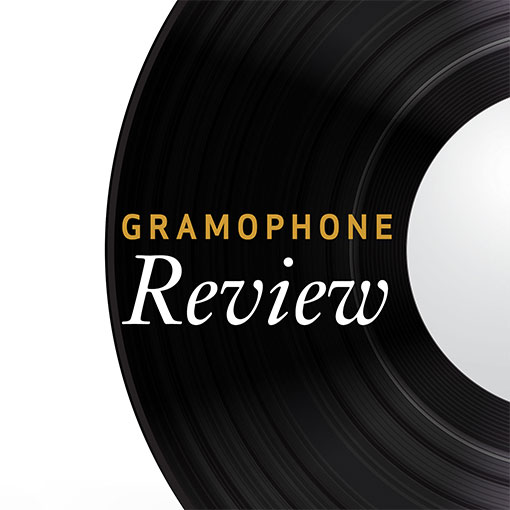Piano Works for Three Hands
View record and artist detailsRecord and Artist Details
Composer or Director: Franz Schubert, César Franck, Felix Mendelssohn, Gabriel Fauré
Label: Nimbus
Magazine Review Date: 9/1989
Media Format: CD or Download
Media Runtime: 79
Mastering:
ADD
Catalogue Number: NI5178

Tracks:
| Composition | Artist Credit |
|---|---|
| Prélude, choral et fugue |
César Franck, Composer
César Franck, Composer Cyril Smith, Piano Phyllis Sellick, Piano |
| Allegro brilliant |
Felix Mendelssohn, Composer
Cyril Smith, Piano Felix Mendelssohn, Composer Phyllis Sellick, Piano |
| Fantasie |
Franz Schubert, Composer
Cyril Smith, Piano Franz Schubert, Composer Phyllis Sellick, Piano |
| Sonata for Piano Duet |
Franz Schubert, Composer
Cyril Smith, Piano Franz Schubert, Composer Phyllis Sellick, Piano |
| Dolly |
Gabriel Fauré, Composer
Cyril Smith, Piano Gabriel Fauré, Composer Phyllis Sellick, Piano |
Author: Joan Chissell
Younger readers should perhaps be reminded of the international reputation long enjoyed by Cyril Smith and Phyllis Sellick as a two-piano duo, a partnership they courageously continued with three hands after Smith lost the use of his left arm. All five works were recorded in July 1974, only a month before his sudden death at the age of 66, though only the Franck, Mendelssohn and Faure found a place when the LP first appeared in 1981.
Strangely, the CD booklet doesn't tell us who arranged Schubert's Fantasie and B flat Sonata for them. In the sonata (written during a Hungarian sojourn when Schubert was only 21) you'd hardly guess any arrangement had been necessary at all. In both works I enjoyed the players' immediate response to the mood of the moment and the time they allow themselves to savour everything to the full. But pursuit of expression, manifest in frequent yieldings of pulse, does sometimes disrupt the music's longer flow—as notably in the plaintive recurrent theme in the Fantasie and even the opening subject of the Sonata's first movement. As sound per se, I was not too seriously worried about the reverberant recording venue until a few thicker swellings in the Fantasie's final fugato, likewise one or two clangier outbursts in the Sonata's concluding Allegretto.
Of the three reissued works, by far the most winning is Faure's Dolly, chiefly because of its simpler textures needing only minimal adjustment for three hands. Here their tonal translucency, coupled with intimately tender phrasing, makes it as recommendable as any of the catalogue's four-handed versions. Mendelssohn's brilliant Allegro and Franck's equally characteristic Prelude, Choral et Fugue (both arranged by John Odom) bring further reminders of these artists' very closely attuned ensemble. Nevertheless, I did find myself questioning their unusually slow tempo for Franck's opening Prelude, and one or two moments of less than perfect balance such as in sufficient top in the Choral and the first entry of the chorale tune itself and also the lead into the Fugue. But how much that extra hand helps in disentangling thematic strands as excitement mounts towards the end.'
Strangely, the CD booklet doesn't tell us who arranged Schubert's Fantasie and B flat Sonata for them. In the sonata (written during a Hungarian sojourn when Schubert was only 21) you'd hardly guess any arrangement had been necessary at all. In both works I enjoyed the players' immediate response to the mood of the moment and the time they allow themselves to savour everything to the full. But pursuit of expression, manifest in frequent yieldings of pulse, does sometimes disrupt the music's longer flow—as notably in the plaintive recurrent theme in the Fantasie and even the opening subject of the Sonata's first movement. As sound per se, I was not too seriously worried about the reverberant recording venue until a few thicker swellings in the Fantasie's final fugato, likewise one or two clangier outbursts in the Sonata's concluding Allegretto.
Of the three reissued works, by far the most winning is Faure's Dolly, chiefly because of its simpler textures needing only minimal adjustment for three hands. Here their tonal translucency, coupled with intimately tender phrasing, makes it as recommendable as any of the catalogue's four-handed versions. Mendelssohn's brilliant Allegro and Franck's equally characteristic Prelude, Choral et Fugue (both arranged by John Odom) bring further reminders of these artists' very closely attuned ensemble. Nevertheless, I did find myself questioning their unusually slow tempo for Franck's opening Prelude, and one or two moments of less than perfect balance such as in sufficient top in the Choral and the first entry of the chorale tune itself and also the lead into the Fugue. But how much that extra hand helps in disentangling thematic strands as excitement mounts towards the end.'
Discover the world's largest classical music catalogue with Presto Music.

Gramophone Digital Club
- Digital Edition
- Digital Archive
- Reviews Database
- Full website access
From £8.75 / month
Subscribe
Gramophone Full Club
- Print Edition
- Digital Edition
- Digital Archive
- Reviews Database
- Full website access
From £11.00 / month
Subscribe
If you are a library, university or other organisation that would be interested in an institutional subscription to Gramophone please click here for further information.





